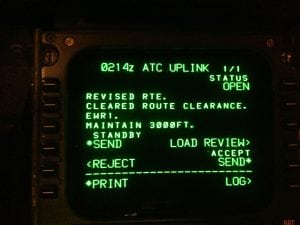 Data communications is now live at Minneapolis-St. Paul International Airport, the FAA said. Controllers and pilots can now transmit information, like clearances, revised flight plans and advisories, “with the touch of a button.”
Data communications is now live at Minneapolis-St. Paul International Airport, the FAA said. Controllers and pilots can now transmit information, like clearances, revised flight plans and advisories, “with the touch of a button.”
“Inside the tower, controllers enter flight departure clearance instructions into a computer and push a button to electronically send the information to an aircraft’s flight deck,” the FAA said. “Flight crews read the information, press a button to confirm receipt, and press another button to enter the instructions into the aircraft’s flight management system.”
The next-generation technology substitutes voice communication with text-based communication. It can greatly benefit the airport during winters and thunderstorms in Minnesota by saving time. Two-way radios, the FAA said, can take two to three times longer than what data communications can provide. Aircraft, then, can get off the runway faster, potentially beating the inclement weather. It is expected to save operators more than $10 billion over the 30-year lifecycle of the program. The FAA is also positioned to save $1 billion in future operating costs.
Salt Lake City’s William P. Hobby and Houston’s George Bush Intercontinental airports were the first to be equipped. They received tower departure clearance services eight months ahead of schedule in 2015.
The solution is currently operational at 55 air traffic control towers, and the FAA said rollout is under budget and more than two and a half years ahead of schedule. It plans to allocate those budget savings to deploying the system at more airports. Initial en route services are scheduled to begin in 2019.